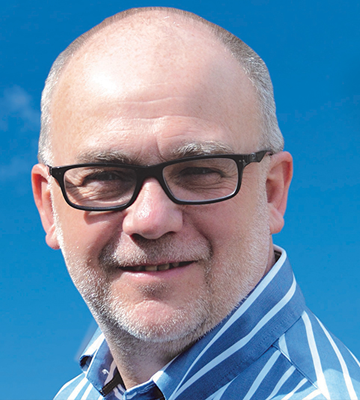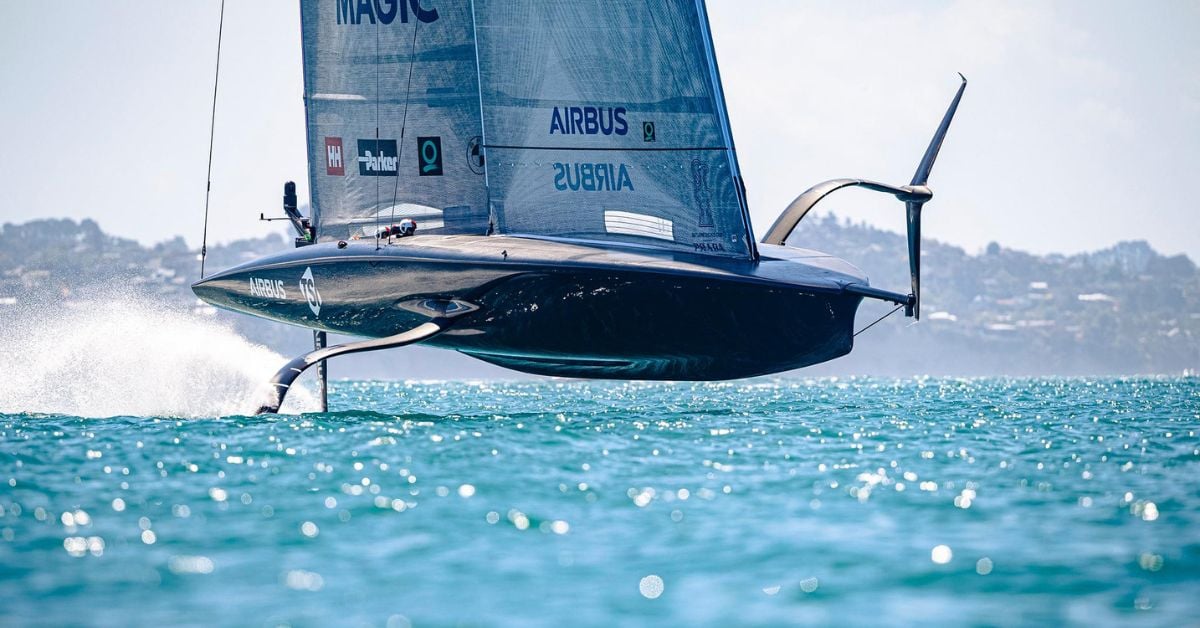Emerging technologies: the key to sustainable and accessible sailing?
 Kim Hollamby
Kim Hollamby
We ask renowned yacht designer and DAME Design Awards jury member, Olivier Racoupeau, how emerging technologies are assisting yacht design today and which developments he would like to see in the future.
Olivier Racoupeau is co-founder of one of the world’s leading production boat and custom yacht design studios. Berret-Racoupeau is based in the French sailing heartland of La Rochelle. The team is multidisciplinary with the capability to coalesce naval architecture, exterior and interior design into one cohesive project.
The company has been a major design partner of Beneteau for more than 40 years; many other leading sail and power manufacturers also offer Berret-Racoupeau designs within their line-ups.
Olivier has been a valued DAME Design Awards jury member since 2017, bringing valuable insights from his busy design studio into the judging room. We caught up with him recently ask how emerging technologies are assisting yacht design today and which developments he would like to see in the future.
He identifies the desire for environmental impact reduction is providing major impetus for technological development but points out this must be accompanied by a desire to change and think creatively: “Driving more sustainable practices using emerging materials and equipment requires a change of mindset,’ Olivier says. “It’s not so easy to switch from one technology to another in day-to-day operations, but if we look at everything and make even small changes, we can make gains.
“There are many changes happening within materials. We are pushing to put more local wood in the construction of a yacht, such as the use of poplar in plywood. We’re also looking at the way in which teak alternative timber is being developed for decking and it’s good to have a solutions for this application that capture carbon.
“The use of volcanic (basalt) fibres as a substitute for glass in composites is good but expensive for production boat use at this point. We’re also looking at using natural fibres like linen and bamboo. The structure of these fibres can create routes for humidity to move through composites, but we think these natural fibres have a role in non-structural components. The environmental gain here is through the energy saving gained by not producing glass.
“What we'd love to see in the future is more components that help us with sustainable construction. The current generation of eco-sourced resins are often at the margin of the strength we need. That’s one area where I’d like to see improvement.”
Balancing performance and comfort
Looking at overall yacht design, Olivier says that two key pressure points are balancing the need for performance against the comfort that people now expect afloat. The ability to cruise efficiently under power and to sail easily are also priorities.
Computational fluid dynamic (CFD) software is routinely used by Berret-Racoupeau to optimise hull efficiency and reduce drag. This practice is refined now to the point where theoretical calculations are typically close to what is measured when the first off the line hits the water.
Comfort is however often counter-intuitive to performance, as Olivier explains: “Weight is a big issue for us. Yachts users often don’t understand the relation between equipment, space, power, energy storage and performance, but we really need to pay close attention to that.
We undertake a lot of CFD calculations and simulations to drive improvements in hull efficiency, even for cruising yachts, because we must maintain performance even if the weight increases a lot. There are many hull design features under examination such as the use of asymmetric hull forms, smaller keels, or dagger boards on catamarans.”
Most new recreational craft now hit the water with much more equipment than ever before. It suggests that weight saving on any product needs to be a potentially bigger priority for equipment and material manufacturers in the future.
Influence of tomorrow’s customer
Our conversation turns to another major driving force of yacht development – the customers that use them. Olivier sees the market as breaking down broadly into two groups, each with their differing priorities: “There is what I call the expert generation. They love to sail, steer and trim the sails. They are looking for real sailing yachts and often something quite classical. However, I don’t see that market growing and it has remained the same for years now.
“Then there are the newcomers. They want to prioritise living onboard. They still want to sail but want it to be easier and not require specialist skills. They want to tack easily and control all functions onboard from their smart phones. The newcomer generation is growing – and that’s positive but we do need to develop solutions that fully address the needs of this group.
“Catamaran designs are a good match. They offer lots of space onboard and more comfortable sailing experiences. The lack of heeling means they are much easier to move about on and less likely to worry people. They are also a natural fit for hybrid power with electrical loads assisted by solar, wind or hydro-generation. Even if this is not sufficient to power the propulsion, the development of these technologies is helping to deal with hotel loads and create greater self-sufficiency away from the marina.”
When asked to consider whether the recreational marine equipment sector is providing the products needed to address this market, Olivier recognises that the industry is very good at adapting to what is available. However, he reflects that newer generations of customers are asking different questions of boat builders and challenging them to provide new features that assist simplicity.
“We have to improve everything that is complex,” Olivier continues. “I’d like to see development of practical captive winch systems for smaller sailing yachts to enable easier tacking and gybing. Mainsail furling is another area that requires addressing for newer generations. In-mast furling is a solution, but it’s not the only one. Further developments with in-boom furling could offer simple options for more accessible sailing.
“Our target example needs to be the car industry where everything is simplified to the maximum. Your hatchback opens with a press of a button or wave of your foot, the fuel flap opens automatically when you need it – and so on. It’s difficult to replicate that kind of ease of use everywhere on a boat, but we need to try.”
DAME Design Awards 2024
Olivier Racoupeau will be among an expectant jury waiting to assess which breakthrough products will be worthy of nomination for this year’s globally renowned DAME Design Awards at METSTRADE. Entries will open for all METSTRADE exhibitors in July – watch out for further announcements.
.jpg?h=400&iar=0&w=1200)

